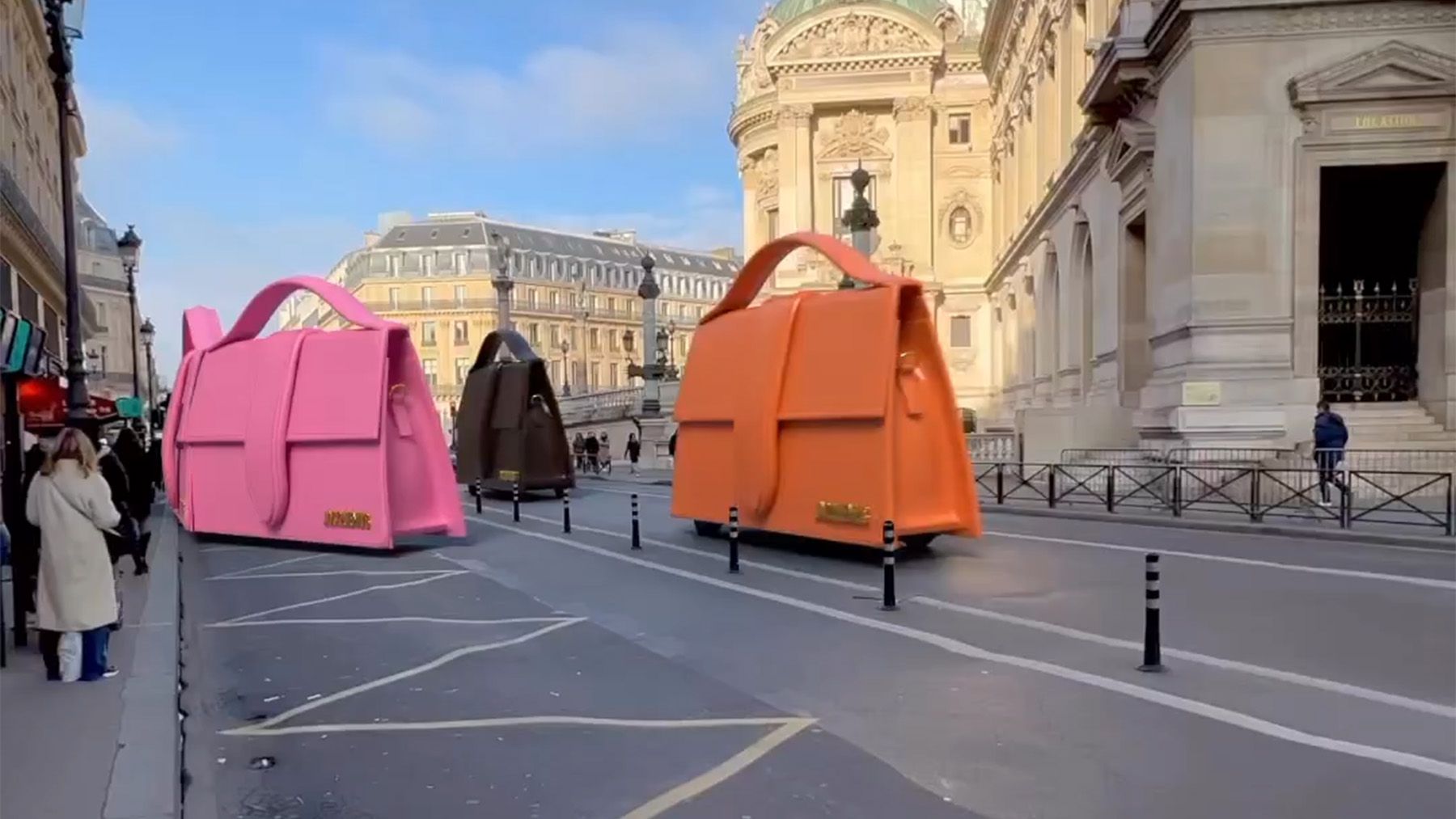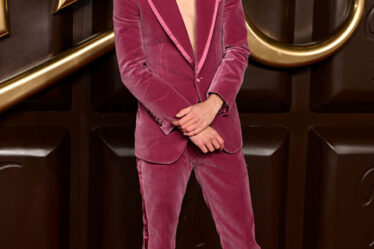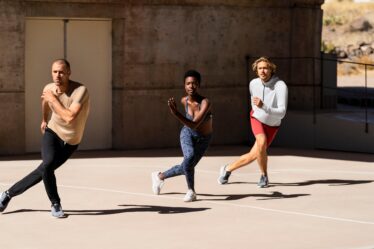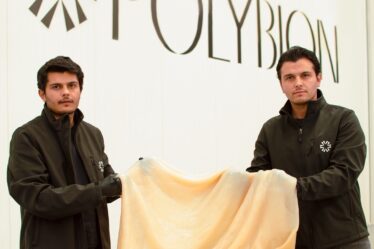
It began with a post to Jacquemus’ Instagram account of a couple of vibrantly coloured and oversized giant purses gliding like trams along the streets of Paris. The French brand followed it up with a huge purse “sailing” on Lake Como.
Next came Tod’s, reimagining its signature driving shoe as an actual car rolling along a classic Cypress-lined Tuscan countryside road. Then came a belt merged with a coastal train, a bag transformed into a hot air balloon floating above Florence and a ballerina flat doubling as a sailboat.
It wasn’t long before other brands jumped onto the trend for the fantastical. Isabel Marant sent a gigantic dollop of toothpaste crashing down from the sky upon unsuspecting passersby on the street in front of its men’s store in Paris. This past week, Victoria Beckham chain purses floated out of the London Bridge, Rome’s Colosseum and other landmarks.
What’s driving this peculiar strain of advertising? Brand and marketing experts say at the base, images of floating handbags and self-driving shoes are more likely to cut through the noise on TikTok, where no-filter authenticity is the new norm. The public is also primed for a little more fantasy in their fashion advertising. There’s the bizarre, yet strikingly realistic-looking imagery generated by artificial intelligence platforms like DALL-E and Midjourney. A taste for the absurd is also evident from last year’s Oscar-winning “Everything, Everywhere All At Once” as well as “Marcel the Shell With Shoes On.”
“We all see picture after picture of product, of clothes, the runway and more runway, especially during fashion week,” said Hélène Mechin, Isabel Marant’s image and communication director. “So then I think when you have something a bit different, it brings more interest to it.”
The author has shared an Instagram Post.You will need to accept and consent to the use of cookies and similar technologies by our third-party partners (including: YouTube, Instagram or Twitter), in order to view embedded content in this article and others you may visit in future.
Providing an Escape
Whimsical content can also serve as a release from pandemic-era turmoil, they said, and the higher digital exposure from the work-from-home grind of back-to-back Zoom meetings.
“The world is so damn dark and our lives are so busy and heavy and so it’s just to play. It sounds very cliche but it’s very true,” said hat designer Maryam Keyhani, who went viral with footage of herself walking into the K21 Museum in Dusseldorf underneath a giant hat, with only her legs peeking out.,
The author has shared an Instagram Post.You will need to accept and consent to the use of cookies and similar technologies by our third-party partners (including: YouTube, Instagram or Twitter), in order to view embedded content in this article and others you may visit in future.
Unlike the other brands’ advertising campaigns, which rely on computer-generated images, Keyhani spent three weeks making the hat. Her stroll felt like a workout, she said, so she even took a nap for 20 minutes inside the hat.
Keyhani told BoF the museum had asked her to create an art performance for the Strike a Pose design festival. Although the project was not intended to be commercial, Keyhani’s products tend to have a surrealist feel to them. A “souffle” hat is one of her bestsellers and she sells another headpiece that appears as if it is two hats stacked on top of each other.
When she posted the video of her art performance set against the music of the Sugar Plum Fairy, it exploded on social media. It was featured in People Magazine and was reposted by the actress Diane Keaton, a well-known hat aficionado. She got a boost in followers and in enquiries about her products.
“To run around the museum like that, oh my god, that is so silly. It was unbelievable,” she said. “For me, what was beautiful is that the reach was not really specifically aimed at fashion people … this was just everybody, you know.”
The New Aesthetic
The rise of AI has birthed a new visual language, where anyone can throw together disparate objects into one wacky image. Some brands, including Casablanca, are using the technology in their campaigns, though Jacquemus, Victoria Beckham and others relied on standard digital effects.
“The new consumer can already see through glossy images … they’re very adept at understanding this visual language,” said Alex O’Neill, a New York-based freelance creative director.
He believes this kind of communication is especially effective with a Gen-Z consumer who has grown up with a blended reality. They send pictures of themselves wearing Snapchat filters, buy AR gifts on livestreams of their favourite TikTok creators and may buy the new Apple Vision Pro.
Even though the amount of time people are spending on the actual metaverse is still relatively low, this aesthetic is spreading outside the virtual.
Isabel Marant bridged their playful toothpaste campaign, which was created to promote its latest men’s collection, to the offline world. It handed out 1,000 tubes of toothpaste at its stores in Paris, London, and New York. The physical handout was also a way to let customers know it had a new men’s store in Saint-Germain-des-Prés.
“It was a big success, a lot of lines in front of the shops with people coming for that,” said Mechin. She added that the engagement level of the posts matched posts for a runway show. “It was great to have this synergy and not only having a buzz on digital but also having something real.”
The author has shared an Instagram Post.You will need to accept and consent to the use of cookies and similar technologies by our third-party partners (including: YouTube, Instagram or Twitter), in order to view embedded content in this article and others you may visit in future.
The Pendulum Swings Back
Tom Hyde vice president of strategy at creative agency Movers and Shakers believes that surrealist marketing is part of a post-Instagram stylistic phase.
Brand content is diverging into two lanes: Individuals and mass brands are embracing no filters and spontaneity; more aspirational labels use a fantastical aesthetic.
“[Luxury brands] are more likely to go in the other direction … to really embrace the idea that this isn’t reality,” he said.
As brands try to top each other’s absurd campaigns, the pendulum may quickly swing back. Hyde predicts that campaigns will grow weirder and more outlandish until a more traditional campaign might ironically be seen as more refreshing.
“We might see a backlash and move back to actual physicality, craft and genuine in-world experiential creativity,” he said.



